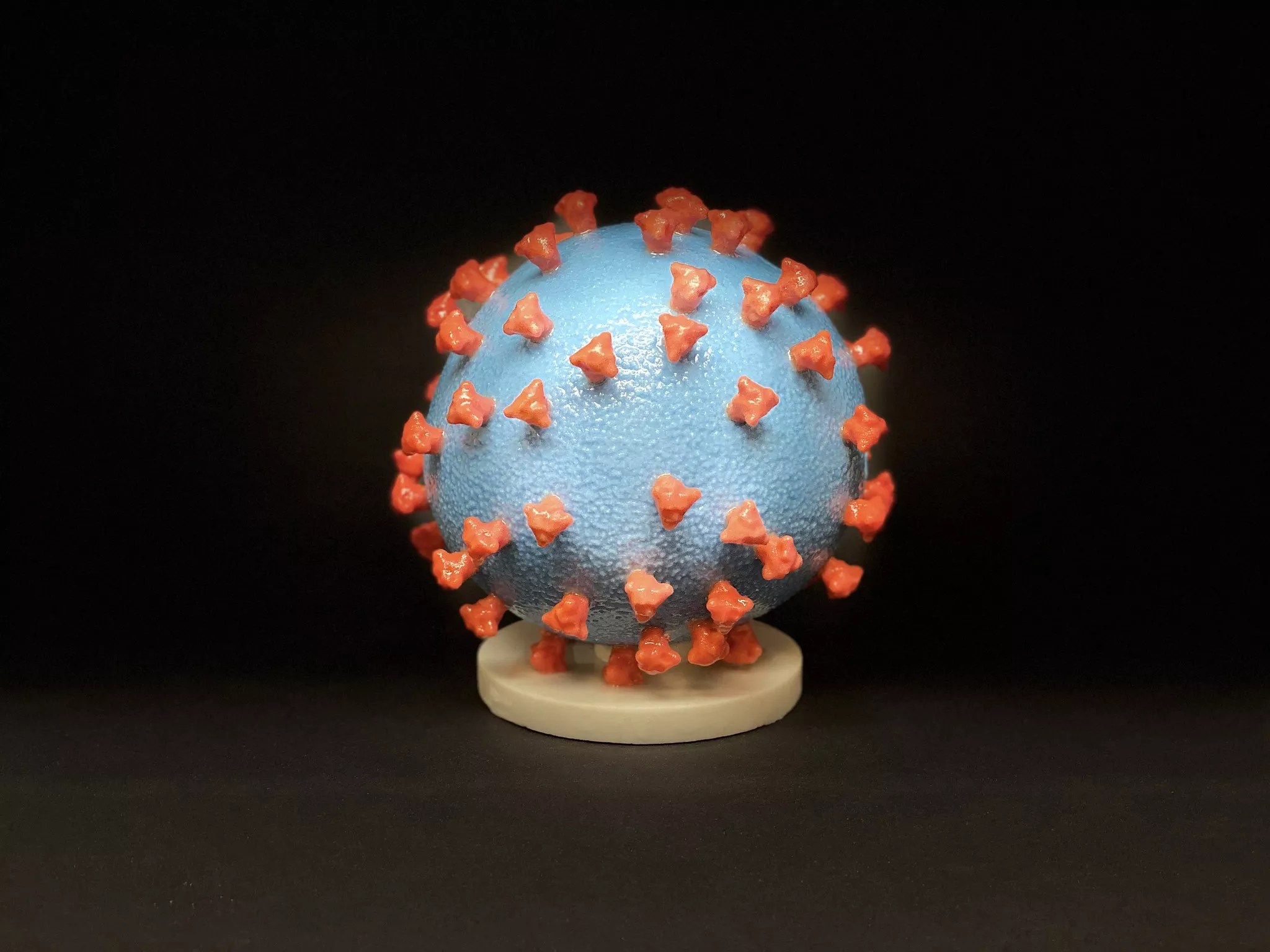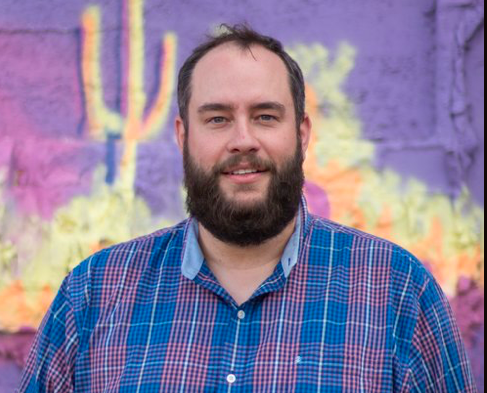

Audio By Carbonatix
Arizona scientists have flung themselves into the worldwide fight against the novel coronavirus, acquiring knowledge and developing treatments that may ultimately result in a weaker virus and less-deadly disease.
“Doctors are learning so much everyday,” said University of Arizona virologist Felicia Goodrum Sterling. “I think we’re going to see the case fatality rate go down in the next few months.”
Sterling, whose recent op-eds promoting social-distancing and the establishment of a pandemic-fighting new federal agency have been widely distributed, admitted that spread of the virus is unstoppable at this point: “It’s way too out of hand.”
But it can be slowed down, studied, and treated, she said.
With little time to invent new devices or drugs, much of the research has involved repurposing treatments previously applied to other ailments.
Early results are promising.
Researcher Curtis Thorne, leader of the University of Arizona’s high-tech Thorne Lab in Tucson, isn’t leaving any options off the table. He and his team of seasoned PhDs and motivated graduate students have scaled back their normal quest to find cancer treatments in favor of fighting COVID-19. They are testing the “vast majority” of FDA-approved drugs of all kinds – antivirals, hair loss drugs, antibiotics – to monitor their effect on the novel coronavirus.

Curtis Thorne
University of Arizona
The team, composed of scientists with expertise in both biology and software development, is positioned squarely in the center of what Thorne calls a “renaissance” in the field of microscopy. His three-year old lab uses high-powered, automated microscopes in tandem with “computer vision” technology that can interpret thousands of images of cells to glean previously unknown details about how drugs, human cells, and unwelcome intruders (viruses, cancer, and bacteria) interact.
The fact is, people don’t understand exactly how many drugs work, or the extent of their full potential. Thorne’s tech can demystify them.
“I think this is a major new direction for drug discovery in any realm of medicine,” he said.
Early in his career, he discovered that a pinworm drug, Pyrvinium, had powerful, previously unknown anticancer properties. Now, a new drug based on his findings is in development. Ideally, he’ll do the same for coronavirus. His team is planning to test nearly every safe drug known to man – about 3,000 of them – by July for efficacy against COVID-19.
“If you can prevent the replication of the virus [by] 50% in a patient, that might be just good enough to increase survival,” he said. “And so that’s why we’re trying to cast our net as broad as we can. We’re interested in any compound that shows an interesting effect on the virus.”
Thorne is proud to be a part of a statewide synchronization of scientific output toward combating COVID-19.
“It’s exciting to see all the scientists work together,” he said. “And it’s exciting to see at a state level, we can do something and we can have a real impact on this virus.”
Dr. Thomas Ardiles, a pulmonologist with Banner Health and the University of Arizona College of Medicine, has already found his anti-virus drug of choice. He is treating hospitalized COVID-19 patients with inhaled nitric oxide – a relatively old treatment with a proven track record.
Ardile was inspired by evidence that nitric oxide, which is traditionally used to dilate the blood vessels in the lungs, showed some success at fighting our current virus’ predecessor in China in 2003, SARS-CoV-1. It appears that in addition to widening blood vessels, the gas outright kills the virus.
Ardiles said the gaseous compound can penetrate tissue and clear the virus from deep in the lungs. The Phoenix-based doctor is part of a group of physicians across the United States administering the gas to COVID-19 patients with a new device as a part of a FDA-approved study.
Official data has yet to be released, but representatives from Bellerophon Therapeutics, the producer of the device, say they have treated over 50 patients so far, and that reports indicate “the therapy appeared to improve oxygenation.”
“There’s a lot of enthusiasm here, because we’re seeing the results,” Ardiles said.
Of all his success stories, one sticks out in Ardiles’ mind. Recently, he was showing an X-ray of a COVID-19 patient’s extensively damaged lungs to a colleague who immediately assumed they had been intubated. But they hadn’t – the gas presumably improved the patient’s condition and prevented an intrusive and often ineffective ventilation.
“The wise virus doesn’t want to kill its host,” Lynch said. “It wants to proliferate. If the host dies, it can’t spread.”
Away from the patients and the drugs used to treat them, researchers are studying the virus itself – learning how it is evolving, and how we might exploit its weaknesses.
Michael Lynch, the director of ASU’s Biodesign Institute for Mechanisms of Evolution, has spent much of his career studying mutation, specifically mutation meltdown, a phenomenon by which accelerating rates of damaging mutations can set a species on “a one-way path to extinction.”
“With enough mutation pressure, anything will go extinct,” Lynch said.
He and ASU colleague Jeff Jensen recently authored a paper in the journal Heredity promoting the phenomenon as a potential strategy for fighting the virus. The idea is to introduce drugs that induce a destructive mutation snowballing effect that will lead to the virus’ demise in its host. This, Lynch said, is essentially the method taken by the antiviral drug Remdesivir, which has been shown to reduce recovery time for COVID-19 patients.
While Lynch’s research is focused on inducing “local extinctions” within individual’s bodies, he is open to the possibility that wider-scale coronavirus mutations could aid in our battle with the virus. In fact, the virus may be weakening itself without our intervention.
“The wise virus doesn’t want to kill its host,” Lynch said. “It wants to proliferate. If the host dies, it can’t spread.”
In this way, the priorities of human and virus are aligned: to keep humans alive.
Virologist Efrem Lim, Lynch’s ASU colleague, has found evidence that SARS-CoV-2 may already be moving in this less-lethal direction. Lim and his team are using technology to efficiently analyze tens of thousands of viral samples to track how it is changing and spreading over time.
They identified one particular specimen that garnered worldwide interest – a viral sample with a large chunk of genetic code missing. This type of mutation was especially striking because it bore resemblance to one observed in the first SARS pandemic. That virus mutated, becoming slimmer and less deadly. If this one follows that path, it would be good news – and another reason to put off infection for as long as possible, if you can.
Information about the virus is evolving quickly as researchers all over the world concentrate their efforts on fighting it. Scientists are enjoying uncommon levels of cohesion, Lynch said.
“Everybody in the world of biology is very specialized these days. People spend their whole lives working on one gene, so it is nice to see a community effort,” he said. “I guess this is what it was like in World War II.”